Happy New Year readers! My first post of the year 2021 or rather the new decade. Battered economies all round due to the Covid-19 pandemic, some semblance of recovery & green-shoots of hope with different vaccines on the verge of approval and mass use makes 2021, a year of Hope.Among the worst-hit industries is the automobile industry,the world over though again some revival looks imminent.If one looks at the automobile manufacturing plants, they are located in a few countries and the automobiles need to be moved all over the world for sale & use. Obviously, the maximum movements of automobiles across the oceans is on vessels. Not a preferred cargo to insure for a Marine Cargo underwriter for a variety of reasons. In India, the cargo underwriter is concerned with automobiles as cargo but more on the inland transit insurance as there are large manufacturing facilities of different brands across India. There is not much reliance on import of automobiles. Inland transits present their own set of problems, primarily the insistence of manufacturers on a Total Loss settlement should there be damages to certain vital parts/portions of an automobile. Even the repair & replacement costs tend to be high and in the backdrop of low premiums, loss ratios tend to be bad.
Having said that, the risk exposures in inland transits are but a fraction of what is prevalent in ocean transits of automobiles. No wonder, underwriters in other parts of the world dread insuring automobiles as cargo moved on vessels. Let us examine why this is so.
The loss experience has not been healthy — losses on automobiles as cargo tend to be massive and are NOT infrequent. It is not only the cargo losses but the Hull & P &I losses too and above all the great danger to human lives which causes concern. A consequence could be environmental losses as well. A few major losses will highlight the magnitude of the problem:
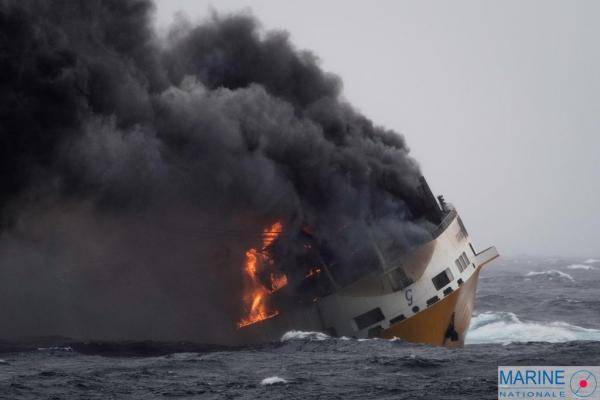
The Grande America was a 1997-built ConRo vessel. The vessel carrying over 2000 vehicles plus over 350 containers caught fire, listed and finally sank en route to Morocco from Germany. The fire started in one of the containers and spread very quickly all over. This accident which happened in 2019 is estimated to cost the insurance industry around US $ 100 million.
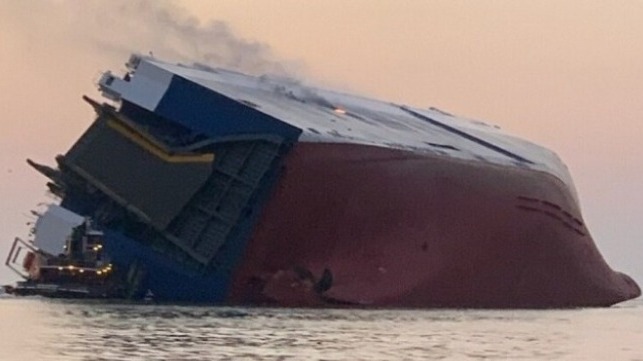
The Golden Ray capsized barely half-an-hour after leaving the Port of Brunswick in the USA. Again in 2019, the vessel was new (2016-built) and she was exiting a modern port specialized in the handling of car-carriers. She was carrying over 4000 new cars & the estimated loss to insurers varies from US $ 150-400 million.
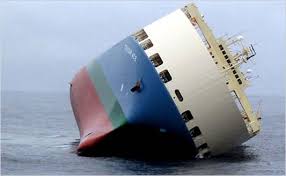
Another US$ 120 million plus loss in 2006. The Cougar Ace while on a voyage from Japan to Canada with over 4000 cars on board capsized near Alaska. The reason for the loss as discovered during investigations was that there was error while exchanging ballast water leading to sudden instability and the vessel capsizing. Though the vessel was righted , towed and delivered for repairs, one of the salvors lost his life during the salvaging operations.
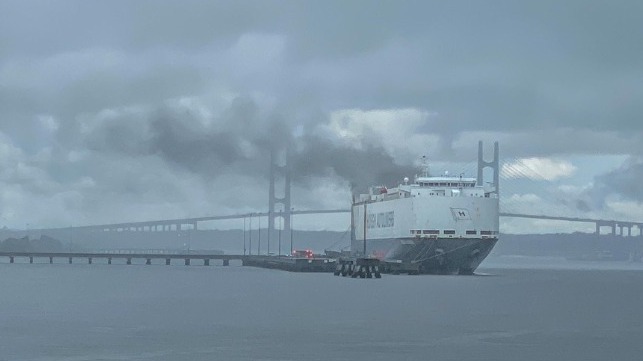
This happened as recently as June 2020 and the vessel has been declared a constructive total loss. Cargo losses are being ascertained. The fire and explosion happened during loading operations in the Blount Island Marine terminal in Jacksonville. The fire was put out after 8 days and many firefighters suffered injuries. While the cause of loss is not clear, speculation is rife that there was a mishap while loading the old cars. A new vessel ( 2016 built) carrying old cars!
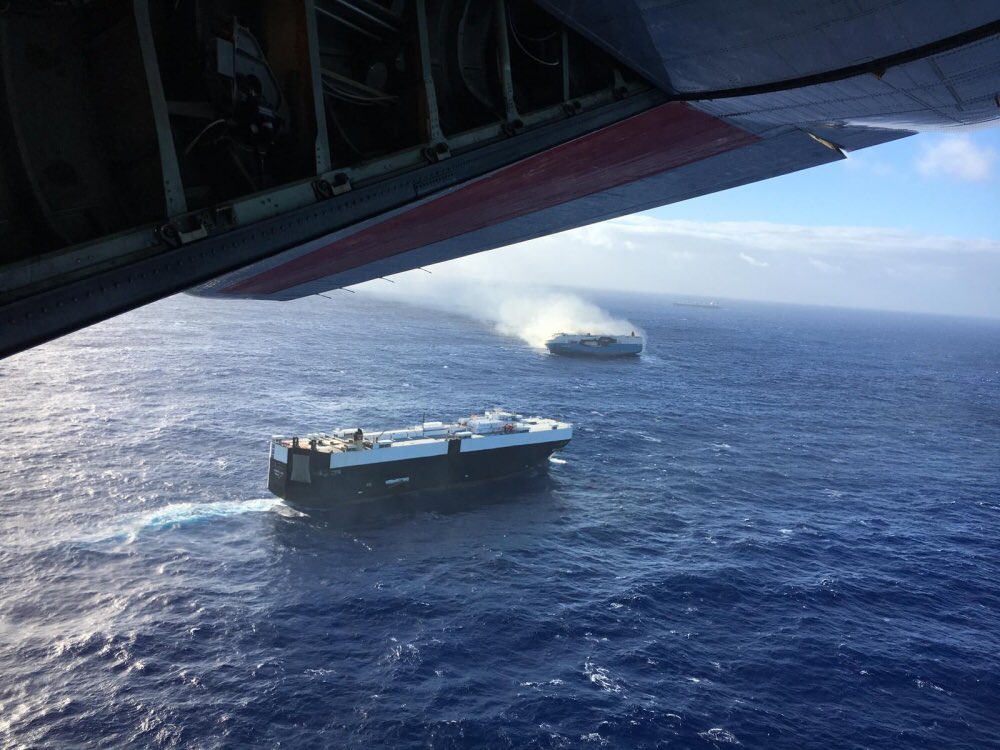
One of the most horrendous accidents in a remote part of the Pacific Ocean. A 2009 built vehicle-carrier, Sincerity Ace was carrying over 3500 cars from Japan to Hawaii. A massive fire enveloped the vessel and the crew, unable to fight it, had to abandon ship and SOS for help. Of the 21 member crew, only 16 could be saved. The vessel was ultimately towed back to Japan and the losses are expected to be around US $ 140 million.
Before we see the possible causes why Ro-Ro vessel accidents occur, it would be good to have a brief idea about these type of vessels & their different versions/types. A Ro-Ro vessel or a Roll On Roll Off vessel is a special type of vessel for transportation of automobiles. Also called Car-carriers, these vessels have loading ramps or inclines at the front or back of the vessel ( bow or aft) or both, using which vehicles could be driven inside the vessels on to their parking slots on various decks,where they would be suitably secured.
Broadly, Ro-ro vessels can be classified as 1) PCC ( Pure Car Carriers) which can carry only cars 2) PCTC (Pure Car & Truck Carriers) which are customised not only to carry cars but trucks and other types of automobiles. 3) ConRo ships which are a combination of Container ships & Ro-Ro ships. They have ramps and carry automobiles as well as containerised cargo. Containers may be only on the weather deck or sometimes inner decks too. Cargo has to be evenly distributed inside to ensure balance. 4) GenRo ships which carry general cargo plus automobiles. These are usually smaller than the earlier mentioned types of vessels. 5) RoPax vessels or ferries which carry both passengers and vehicles over relatively shorter distances.
The main risks associated with any PCC, PCTC or ConRo ships are Fire & Instability caused by various means leading to sinking in very quick time. Instability can be caused by a variety of factors ranging from the structure of the vessel itself to human errors. Structurally, car- carriers have considerable freeboard as compared to container vessels or general cargo vessels. ( Freeboard is the distance between the waterline and the main deck or weather deck of a ship). With cargo stacked on the weather deck too in case of ConRo ships, the vessel stands taller still. When heeling or listing in rough weather or due to internal shifting of cargo not properly locked/secured, the probability of capsizing is high.
Instability can be caused by human error too as happened in the case of the Cougar Ace. Ballast water was being exchanged ( taken in and taken out simultaneously from different tanks) as per Canadian shipping regulations before entering North American waters. Error in computation of simultaneous intake & outflow of ballast water caused sudden imbalance and the vessel capsized. Faulty stowage and load plan can also cause instability and its consequences as happened in case of the Golden Ray.
Fire is another major threat. As in the case of the Grande America which was a ConRo vessel, fire started in one of the containers and quickly spread all over leading to listing of the vessel and eventually sinking. Mis-declaration of cargo, improper stowage and the attendant risks in all types of vessels gets accentuated in case of these combination carriers as the fire quickly spreads to the vehicles, each of which has small quantities of fuel and substantial easily inflammable parts/components. Electrical fires are also a threat especially when reefer units are being transported. Most electrical fires emanate from the vehicles themselves and given the close proximity to other vehicles, spreads rapidly.
The structure of these vessels also make firefighting difficult, as evidenced in case of the Sincerity Ace. These vessels do not have sub-division bulkheads to enable easier movement of vehicles inside for loading/unloading. The disadvantage is that in case of fires/flooding, the same cannot be contained to a particular compartment and the fire/ flooding quickly travels the entire length of the ship’s interior. With electric cars being the future, will there be lesser risk of fire on board car-carriers as the fuel element in the cars would be missing? Perhaps yes, perhaps no because the charging points for electric cars also need monitoring to ensure that sparking does not happen.
Flooding too is a major risk exposure for car-carriers because once water breaches the ship’s walls, the spread tends to be quicker because of the aforesaid reasons. Finally, safety of the crew is also a concern, given the location of the lifeboats and the high freeboard, evacuation in case of emergencies tend to be that much more difficult.
Continuous improvements to the structure of these vessels, enhanced safety measures, training of crew, etc is on, as these ships are becoming larger, costlier in value( Hull+ cargo) & riskier too……… but if the wheels of the automobile industry are to be kept moving, the propellers of car-carriers have to keep spinning..
Discover more from BalasBroadcast
Subscribe to get the latest posts sent to your email.
Good analysis of marine risks and its impact on auto industry. With passage of time, there is a need to manage the risks for all businesses for an all round development of various industries leading to lower exposure for risk carriers..